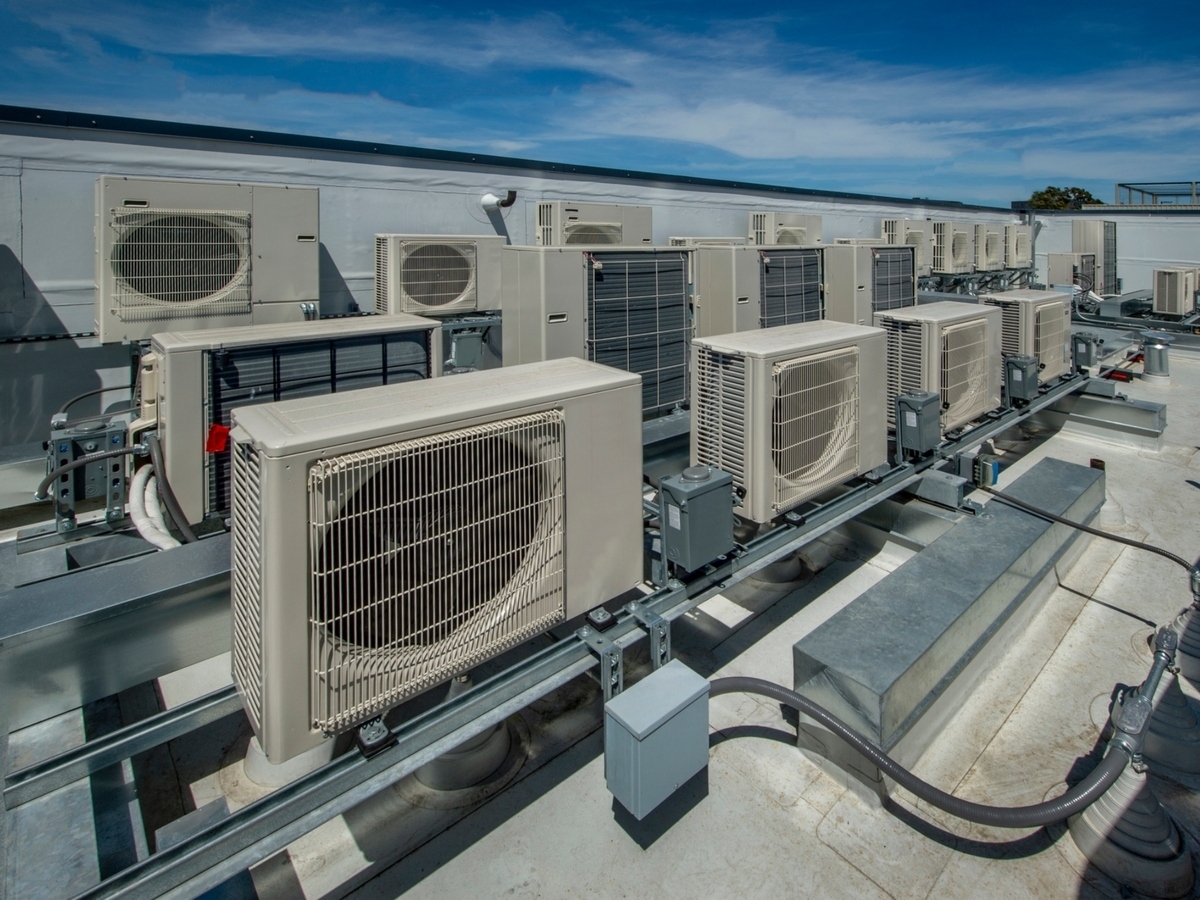Pumping Up Sustainability: Myth-Busting Heat Pumps in Commercial Real Estate

Heat pumps have a critical role to play as the real estate industry undertakes holistic energy-efficiency improvements on its journey to net zero. Practitioners in America are not yet comfortable with heat pumps, and there is a lack of resources available to guide commercial developers toward the incorporation of heat pumps into new construction and retrofits. There are also misconceptions about the availability or feasibility of incorporating heat pumps into different climates and use cases. The need for this publication came from Net Zero Imperative participants across the United States who are struggling to electrify and convince individuals to use heat pumps, and thus the topic was elevated nationwide. Many myths surround heat pumps, given how they challenge the traditional gas heating model.
This report seeks to convey up-to-date information about electric heat pump technology, to equip real estate practitioners with the knowledge they need to inquire about heat pumps in new and existing projects. Heat pumps are able to both heat and cool spaces. They offer an electric, low-carbon alternative to gas furnaces, boilers, and air-conditioning (AC) units, acting as all-in-one heating and cooling mechanisms that run in both modes of operation. When the weather is warm, air-source heat pumps function as traditional AC units, pumping heat out of the building to circulate cooled air inside a building. When the weather is cold, they change the direction of refrigerant flow, drawing heat from outside into the building. (Yes, there is heat outside, even when the temperature is colder outside than inside.) Ground-source and water-source heat pumps operate the same way, but they transfer heat from the ground and water, respectively. Regardless of the energy source, the process uses refrigerant and a compressor to move heat from one location to another.
Heat Pump Myths Busted in Report
- MYTH 1: Heat pumps are not cost-effective, and my utility bill will go up by switching to heat pumps.
- MYTH 2: Heat pumps are not a viable option for properties in cold climates.
- MYTH 3: Heat pumps are not commercially proven; they are too new.
- MYTH 4: Heat pumps are only for single-family homes or small commercial and don’t work for mid-rise, high-rise, or industrial properties.
- MYTH 5: Heat pumps can only be implemented in new construction, not in retrofits.
- MYTH 6: Electric heat pumps do not heat as well as gas systems.
- MYTH 7: There is only one type of heat pump.
- MYTH 8: Heat pumps are too loud and take up too much space.
Read the report to understand the facts around these 8 common misconceptions of heat pumps in commercial buildings.
Report Summary: Heat pumps have a critical role to play as the real estate industry undertakes holistic energy-efficiency improvements on its journey to net zero. Practitioners in America are not yet comfortable with heat pumps, and there is a lack of resources available to guide commercial developers toward the incorporation of heat pumps into new construction and retrofits. There are also misconceptions about the availability or feasibility of incorporating heat pumps into different climates and use cases. The need for this publication came from Net Zero Imperative participants across the United States who are struggling to electrify and convince individuals to use heat pumps, and thus the topic was elevated nationwide. Many myths surround heat pumps, given how they challenge the traditional gas heating model.
This report seeks to convey up-to-date information about electric heat pump technology, to equip real estate practitioners with the knowledge they need to inquire about heat pumps in new and existing projects. Heat pumps are able to both heat and cool spaces. They offer an electric, low-carbon alternative to gas furnaces, boilers, and air-conditioning (AC) units, acting as all-in-one heating and cooling mechanisms that run in both modes of operation. When the weather is warm, air-source heat pumps function as traditional AC units, pumping heat out of the building to circulate cooled air inside a building. When the weather is cold, they change the direction of refrigerant flow, drawing heat from outside into the building. (Yes, there is heat outside, even when the temperature is colder outside than inside.) Ground-source and water-source heat pumps operate the same way, but they transfer heat from the ground and water, respectively. Regardless of the energy source, the process uses refrigerant and a compressor to move heat from one location to another.
Heat Pump Myths Busted in Report
- MYTH 1: Heat pumps are not cost-effective, and my utility bill will go up by switching to heat pumps.
- MYTH 2: Heat pumps are not a viable option for properties in cold climates.
- MYTH 3: Heat pumps are not commercially proven; they are too new.
- MYTH 4: Heat pumps are only for single-family homes or small commercial and don’t work for mid-rise, high-rise, or industrial properties.
- MYTH 5: Heat pumps can only be implemented in new construction, not in retrofits.
- MYTH 6: Electric heat pumps do not heat as well as gas systems.
- MYTH 7: There is only one type of heat pump.
- MYTH 8: Heat pumps are too loud and take up too much space.
Read the report to understand the facts around these 8 common misconceptions of heat pumps in commercial buildings.


